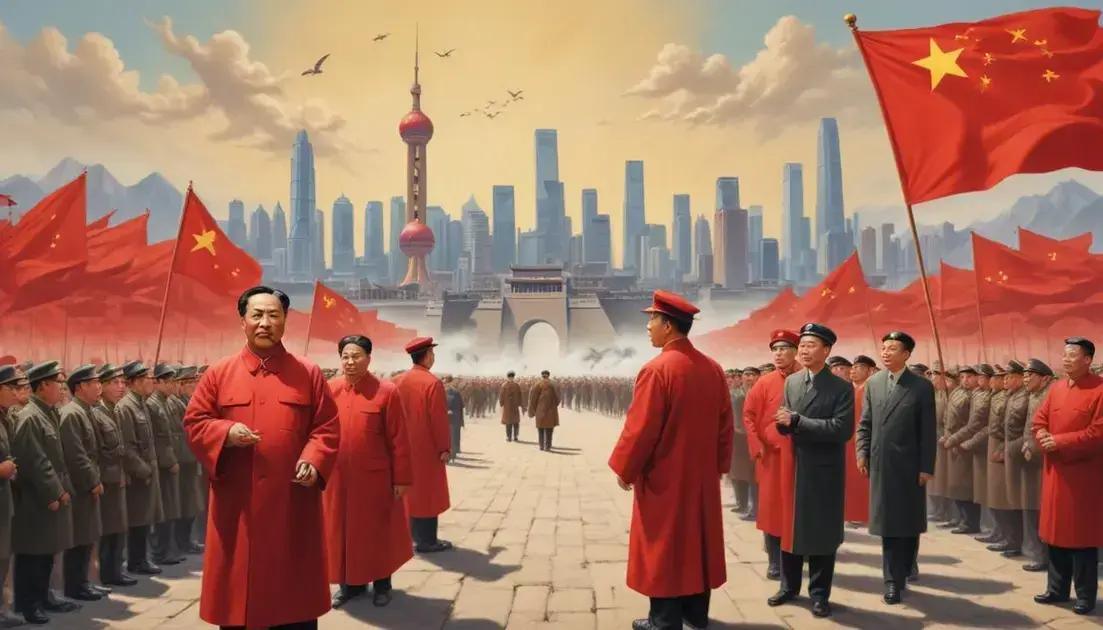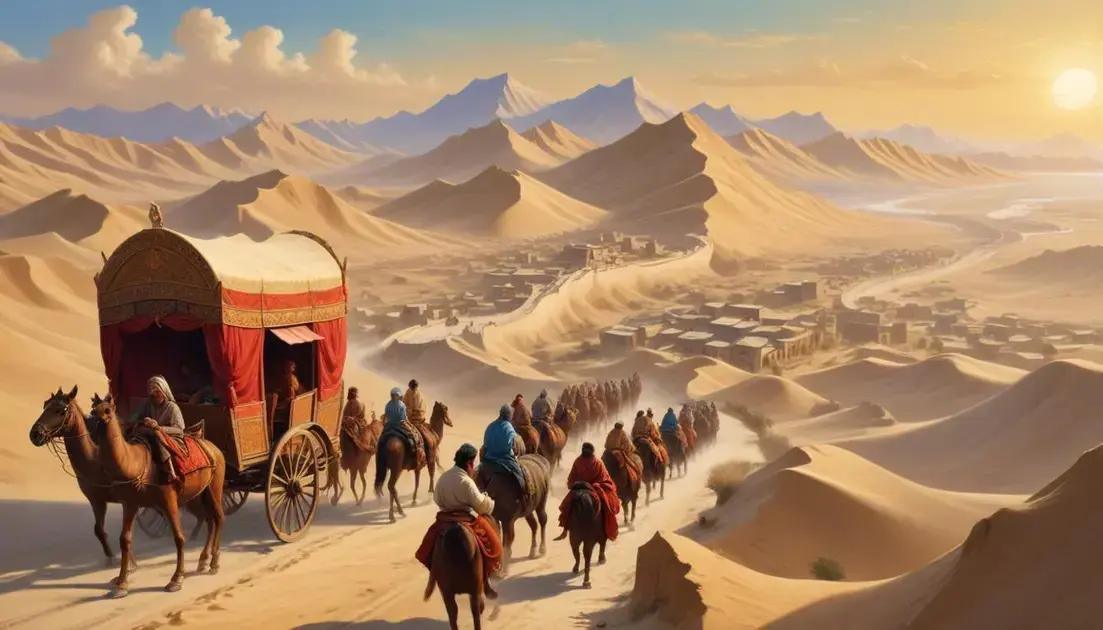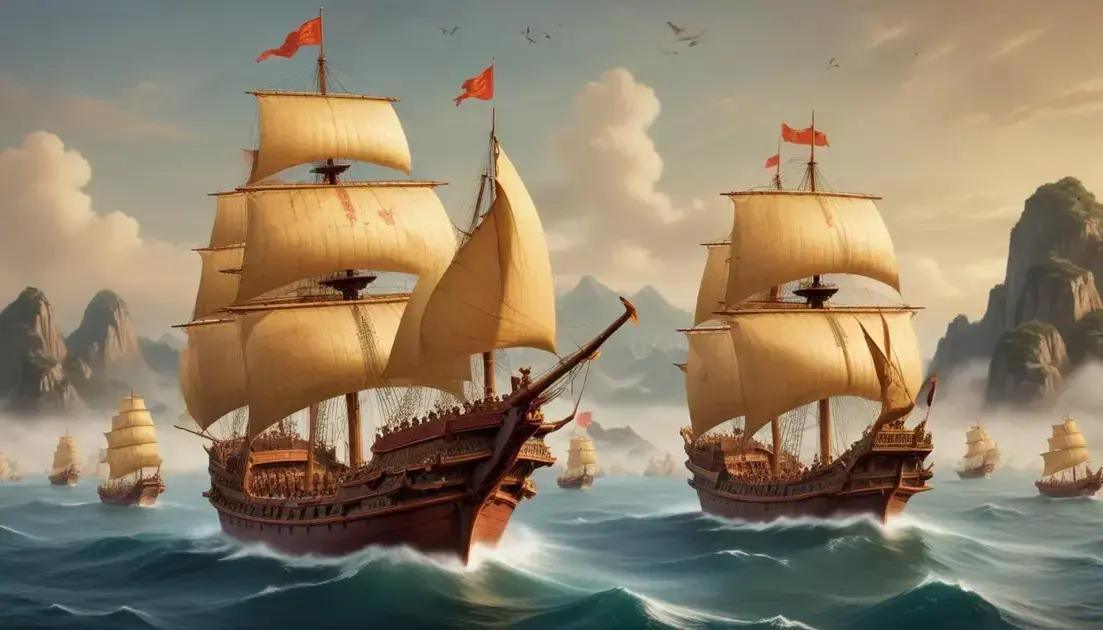
China: From Mao’s Revolution to State Capitalism
China’s economic landscape has transformed significantly from strict socialism to a hybrid model embracing capitalism. Key figures like Deng Xiaoping initiated market reforms, leading to rapid growth and the emergence of a middle class. Current policies emphasize infrastructure development, technological innovation, and clean energy, balancing economic expansion with social welfare. This unique blend continues to influence China’s position in the global economy while addressing domestic challenges.
Welcome to our exploration of China’s fascinating journey! From the upheaval of Mao’s revolution to the embrace of capitalism, this article delves into the complex blend of socialism and market strategies that define the country today.
Introduction to China’s transition
China has undergone a remarkable transformation over the decades. It shifted from a strictly controlled economy to one that embraces certain capitalist elements. This journey has not always been easy, and it includes lots of ups and downs.
The Role of Mao Zedong shaped the country for many years. Mao’s ideas focused on a strong, centralized government. His policies aimed to benefit the people but often led to difficult times, like the Great Leap Forward.
After Mao’s death, many began looking for new ways to improve the economy. Leaders started to realize that some capitalist practices could help the country grow.
Deng Xiaoping was a key figure in this shift. He introduced reforms that opened China to foreign businesses and allowed some private ownership. These changes helped boost China’s economy significantly.
Today, China is known for its rapid growth and development. Cities are bustling with activity, and technology plays a big role in everyday life. Yet, the balance between socialism and capitalism continues to be a topic of debate within the country.
The impacts of Mao’s revolution
Mao Zedong’s revolution changed China forever. It aimed to build a strong, equal society. However, it brought many challenges and hardships.
During the Great Leap Forward, Mao wanted to increase agricultural and industrial production rapidly. Sadly, this led to a massive famine, causing millions to suffer. This era showed how important it is to plan changes carefully.
After the revolution, the government took control of many aspects of life. They promoted communal living and shared resources. While this created a sense of unity, it often limited personal freedoms.
Mao’s policies also emphasized class struggle. The Cultural Revolution aimed to eliminate capitalist ideas and promote socialist values. Schools were closed, and many intellectuals faced persecution during this time.
Despite the tough times, Mao’s revolution set the stage for future growth. His ideas still influence China today, even as the country moves towards a more capitalist approach. The lasting effects of his leadership are seen in both politics and society.
The rise of capitalism in China
The rise of capitalism in China has transformed the country. After Mao’s era, leaders saw that some capitalist approaches could boost the economy. This change began in the late 1970s.
Deng Xiaoping was a key figure in promoting these ideas. He encouraged foreign investment and allowed private businesses to grow. This shift opened up new opportunities for many people.
One major change was the introduction of Special Economic Zones. These areas attracted international companies and created jobs. They fueled rapid growth and increased exports.
As more people started their own businesses, a middle class emerged. This new group had more wealth and spending power. It’s led to a big demand for consumer goods and services.
China now plays a major role in the global economy. Its factories produce goods for markets around the world. The blend of socialism and capitalism continues to shape the country’s policies and society.
Socialism and its adaptations
Socialism in China has evolved over the years. It started as a strict system, focusing on state control and equal distribution of resources. But changes were necessary for the nation’s growth.
During Mao’s time, socialism meant heavy government influence in every part of life. However, after his death, leaders recognized that adapting these ideas was essential.
Market reforms became a key part of China’s socialism. These reforms allowed some private ownership and entrepreneurship while keeping a strong government role. This blend helped boost the economy significantly.
The government still plays a central part in big companies and industries. They enforce rules to maintain social order and control over the market. At the same time, they encourage innovation and competition.
Today, socialism with Chinese characteristics promotes development while addressing social issues. This approach offers a unique model compared to Western capitalism, focusing on economic growth alongside social welfare.
Current economic policies
China’s current economic policies focus on achieving sustainable growth and stability. The government aims to balance growth with social welfare. This dual approach helps meet the needs of many people.
One key policy is increasing investments in infrastructure. Roads, bridges, and public transport systems are being built to connect cities better. This makes it easier for people and goods to move around.
The government also promotes innovation and technology. They provide support for startups and tech firms. This helps boost the economy while creating new jobs.
Another important aspect is the push for clean energy. China is investing in renewable sources like solar and wind power. This aims to reduce pollution while making the economy more green.
Trade policies play a crucial role too. China aims to strengthen its position in global markets. By forming trade agreements, it can access new customers and resources.
Conclusion
In conclusion, China’s journey from a strict socialist system to a blend of socialism and capitalism has reshaped its economy. The rise of capitalism, together with effective current economic policies, has led to impressive growth and development. As infrastructure expands and innovation thrives, the nation stands at the forefront of global markets.
However, the balance between state control and market freedom remains crucial. By adapting socialism to meet today’s challenges, China continues to evolve. This unique approach offers valuable lessons on managing growth while ensuring social welfare and sustainability. Understanding these dynamics is essential as we look to the future of both China and the global economy.


